1. Overview
Jacques Bernard Edmon Martin Henri "Jacky" Ickx (born 1 January 1945) is a Belgian former racing driver renowned for his exceptional versatility and profound impact on motorsport safety. Often hailed as "Monsieur Le Mans" or "The King of Le Mans" for his record-setting six victories at the 24 Hours of Le Mans, Ickx also achieved significant success in Formula One, finishing as runner-up in the Formula One World Drivers' Championship twice and securing eight Grand Prix wins across 14 seasons. Beyond circuit racing, he demonstrated remarkable adaptability by winning the Paris-Dakar Rally in 1983 and the Canadian-American Challenge Cup (Can-Am) in 1979. Throughout his distinguished career, Ickx consistently championed driver safety, most notably through his principled protest against the traditional "Le Mans start," which ultimately led to rule changes that prioritized the well-being of competitors. His commitment to human welfare, alongside his remarkable driving skill, has cemented his legacy as one of motorsport's most respected figures.
2. Early life and career beginnings
Jacky Ickx's journey into motorsport was not immediate, despite a family deeply entrenched in the world of racing. His early life was marked by a surprising lack of interest in the sport, a characteristic that would eventually give way to an unparalleled passion and talent.
2.1. Childhood and early interests
Jacky Ickx was born on 1 January 1945, near Brussels, in Braine-l'Alleud, Belgium. His father, Jacques Ickx, was a prominent motoring journalist who often hosted racing luminaries like Juan Manuel Fangio and Stirling Moss at their home. Despite this exposure, young Jacky remained introverted and seemingly indifferent to racing. He reportedly disliked school and studying. At the age of 13, after attending the Belgian Grand Prix with his father, he famously asked, "Do I have to come back and see this again next year?" This initial apathy contrasted sharply with his older brother, Pascal Ickx, who was already a successful motorcycle racer.
2.2. Motorcycle racing and transition to cars
Ickx's turning point came at 14 when his father, concerned by his son's lack of focus, bought him a 50 cc Zündapp motorcycle. Jacky quickly developed a fervent interest in motorcycle trials and road racing, practicing extensively on forest trails behind his home as he was too young for a license. By 16, he left school. He achieved national success, becoming the Belgian 50 cc trials national champion from 1961 to 1963, even defeating future motocross world champion Roger De Coster. At 17, he was invited to test for the Suzuki factory team and passed, but age restrictions (18 and above) prevented him from competing in official Grand Prix events.
At 18, Ickx transitioned to four-wheel racing after a Zündapp and BMW dealer lent him a BMW 700 on the condition that he maintain it himself. His car racing debut was at a hill climb in La Roche-en-Ardenne, where, in pouring rain, he spun and crashed in front of television cameras, making him instantly famous across Belgium. After serving 15 months in the military, during which he operated an AMX-13 tank and automatically obtained a driving license, he signed with Belgian Ford in 1964. He competed in touring car racing with Ford Cortina and Ford Mustang models, winning the national saloon car championship in 1965 and the Spa 24 Hours in 1966 in a BMW 2000TI. He also gained significant experience in sports car racing, participating in the 1000 km races at the Nürburgring.
3. Formula One career
Jacky Ickx's Formula One career spanned 14 seasons, marked by periods of brilliance with Ferrari and Brabham, intense championship battles, and later struggles with less competitive machinery.
3.1. Debut and early years (1966-1967)
Ickx made his Grand Prix debut at the 1966 German Grand Prix at the Nürburgring, driving a Matra MS5-Cosworth Formula Two (F2) car entered by Ken Tyrrell. The race ended tragically for Ickx as he was involved in a first-lap collision with John Taylor, whose car caught fire, leading to Taylor's death from his injuries.
In 1967, Ickx returned to the Nürburgring with an F2 Matra MS7-Cosworth, again entered by Tyrrell. Despite the more powerful Formula One cars, Ickx showcased extraordinary talent, qualifying an astonishing third overall, behind only Denny Hulme and Jim Clark. Although he started behind all F1 cars in the separate F2 class, he rapidly advanced to fifth place overall within four laps, overtaking 12 F1 competitors. A broken front suspension forced his retirement after 12 laps, but he set the fastest F2 lap, drawing considerable attention from F1 teams.
Following this impressive showing, Ickx made his official Formula One debut at the 1967 Italian Grand Prix at Monza with Cooper. He finished sixth, despite suffering a puncture on the final lap. He also competed for Cooper at the 1967 United States Grand Prix but retired due to overheating. in 1967, he also clinched the European Formula Two Championship title, with three wins and two third-place finishes, further solidifying his reputation.
3.2. Ferrari and Brabham (1968-1969)
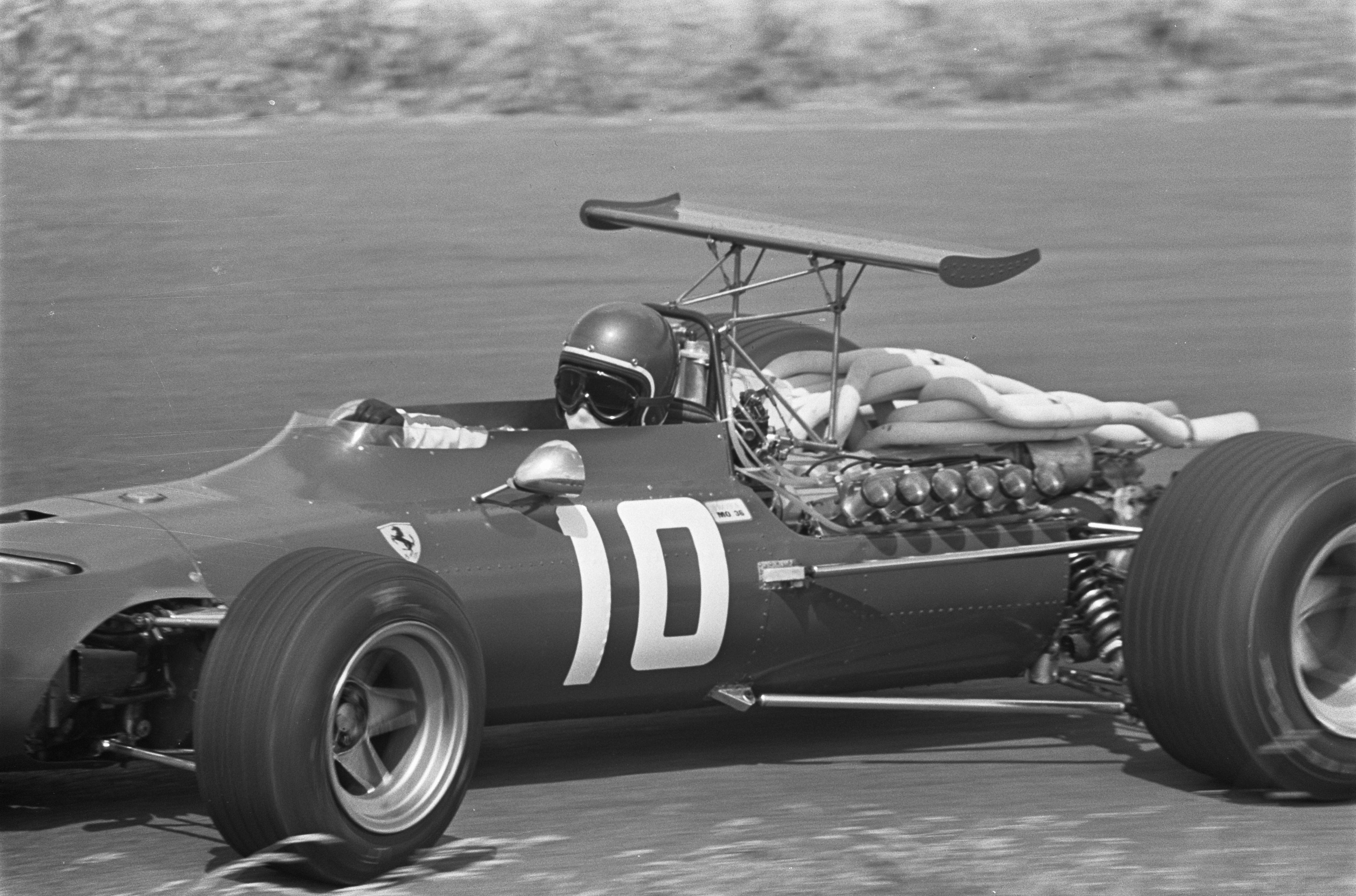
In 1968, Ickx joined Scuderia Ferrari as Chris Amon's teammate. After retiring from his first two races, he secured his first podium at his home race, the 1968 Belgian Grand Prix, finishing third. His maiden F1 victory came in heavy rain at the 1968 French Grand Prix in Rouen-Les-Essarts, earning him the nickname "Rainmaster." He also finished third at the 1968 British Grand Prix and drove impressively in heavy rain without a helmet visor at the 1968 German Grand Prix, where he secured pole position, becoming the youngest Grand Prix polesitter at 23 years and 216 days. His season was interrupted by a broken left leg sustained in a practice crash at the 1968 Canadian Grand Prix due to a throttle linkage issue, forcing him to miss the subsequent 1968 United States Grand Prix. Despite these setbacks, he returned for the final race in Mexico and finished fourth in the championship with 27 points. He later reflected on the Canadian Grand Prix incident, emphasizing the importance of a driver having the courage to abandon a car if they feel something is unsafe.
For the 1969 Formula One season, Ickx moved to Brabham, partly influenced by John Wyer's Gulf Oil team, for whom he had success in sports cars, wishing to retain his services. After initial struggles, his performance improved significantly when Jack Brabham broke his foot, allowing the team to focus entirely on Ickx. He finished third in France, second in Britain, and secured two victories: the 1969 German Grand Prix at the Nürburgring (where he also took pole position and fastest lap, marking the last F1 race before safety improvements were made to the track) and the 1969 Canadian Grand Prix. At the Canadian Grand Prix, Ickx was in a fierce battle with Jackie Stewart, leading to a collision that resulted in Stewart's retirement while Ickx recovered to win. Though criticized for the incident, Ickx later explained he apologized to Stewart, who accepted it amicably. He finished the year as runner-up in the World Drivers' Championship behind Stewart, with 37 points.
3.3. Return to Ferrari (1970-1973)
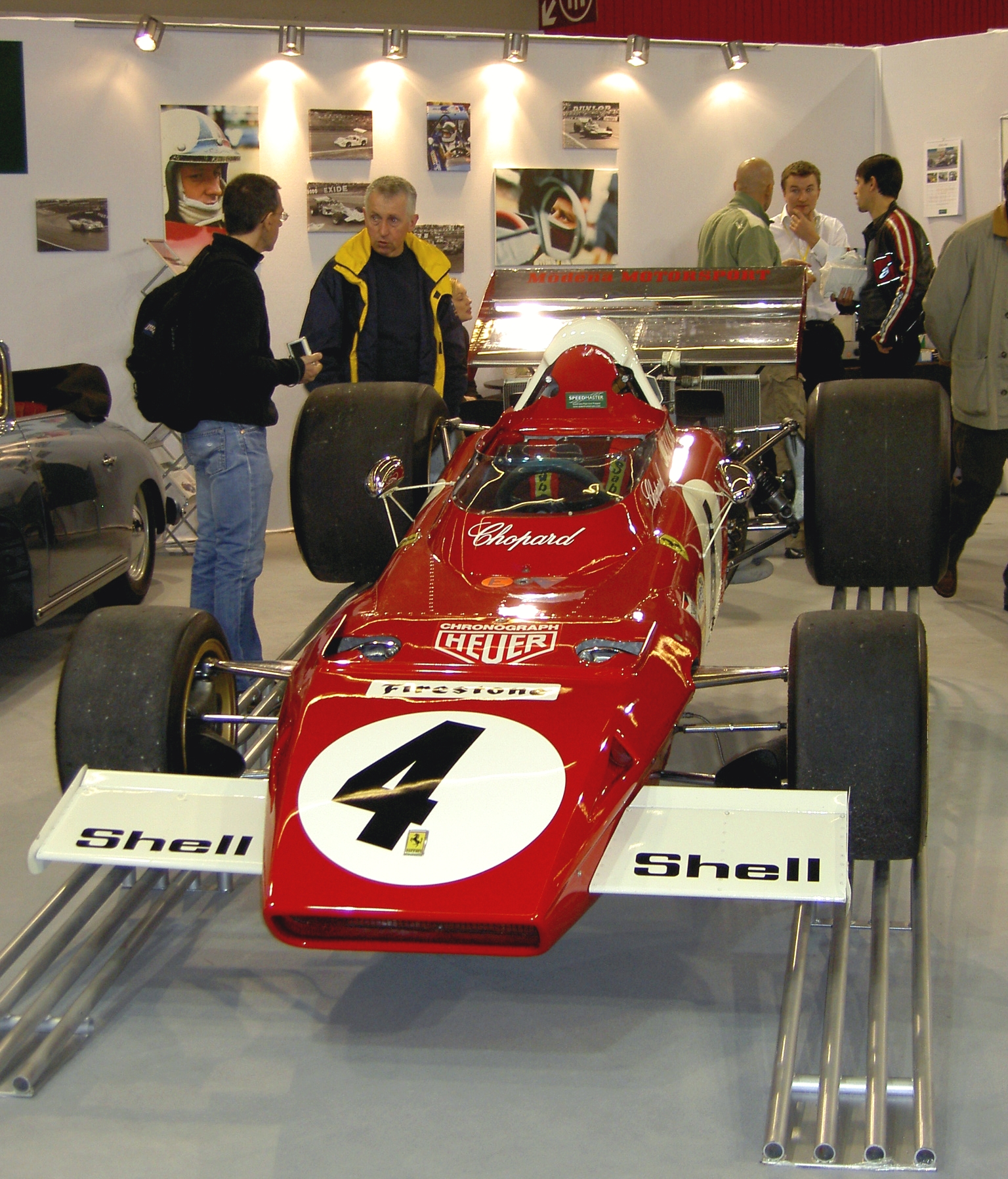
Ickx returned to Ferrari as the lead driver for the 1970 Formula One season, driving the Ferrari 312B. The season began with a challenging incident at the 1970 Spanish Grand Prix, where a collision with Jackie Oliver's BRM resulted in his car catching fire, causing him severe burns. Despite this, he returned to racing 17 days later at the 1970 Monaco Grand Prix. The car's performance improved, and he engaged in a fierce battle with championship leader Jochen Rindt at the 1970 German Grand Prix, ultimately finishing second. Ickx secured his first victory of the season at the 1970 Austrian Grand Prix.
The championship took a somber turn at the 1970 Italian Grand Prix when Rindt tragically died in a qualifying accident. Ickx was the only driver with a mathematical chance to overtake Rindt in the standings. Although his car broke down at Monza, he won the 1970 Canadian Grand Prix. With two races remaining, a victory in both would have given him the title. However, he finished fourth at the 1970 United States Grand Prix, making Rindt posthumously the World Champion. Ickx won the final race in Mexico, but it was not enough to secure the title. He later stated that he was glad he did not win the 1970 World Championship, expressing his reluctance to claim the title against a deceased competitor who could not defend his chances.
In 1971, Ickx and Ferrari were considered favorites, but the championship ultimately went to Jackie Stewart in the new Tyrrell. Ferrari, traditionally focused on the sports car championship, often started the F1 season with less attention. Ickx won the 1971 Dutch Grand Prix in the rain with Firestone wet tyres, outperforming Stewart on Goodyears. He faced numerous retirements that season. Ickx and Stewart, fierce rivals on track, also had differing views on safety. Ickx, a strong advocate for maintaining the challenge of dangerous tracks like the Nürburgring (his favorite), often clashed with Stewart, who vehemently campaigned for increased safety measures. The Nürburgring, which Stewart famously called the "Green Hell," saw changes in 1970 due to driver boycotts, with trees cut and minimal run-off areas added.
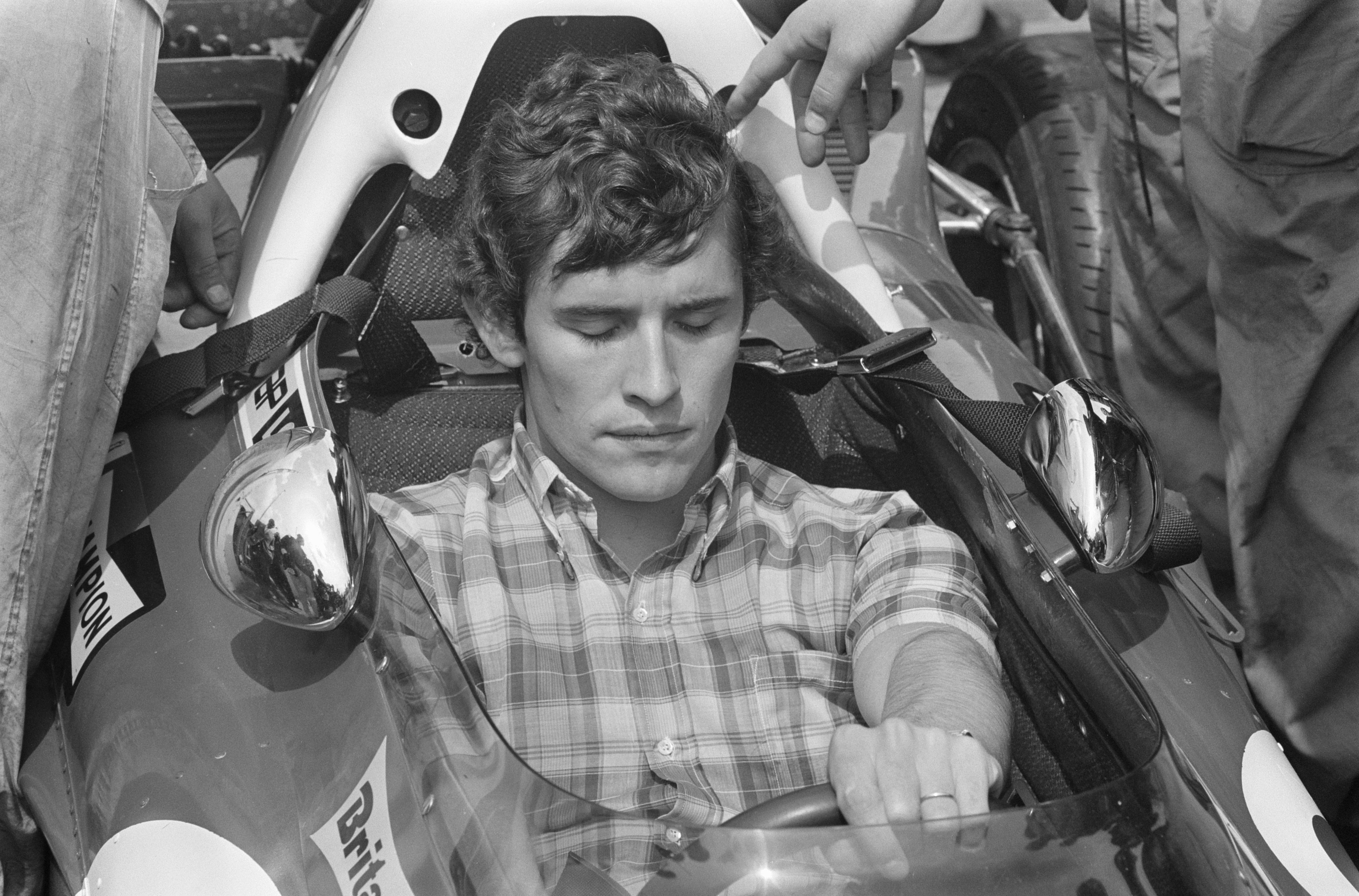
Ickx remained with Ferrari in 1972, securing second-place finishes in Spain and Monaco. His most notable victory of the year, and his last in Formula One, was at his beloved Nürburgring, where he dominated his rival Stewart, demonstrating that superior driving skill could triumph over superior machinery.
The 1973 Formula One season saw the Ferrari 312B3 become uncompetitive in Formula One, despite Ferrari's continued success in sports car racing, with Ickx contributing to several victories in that discipline. The Italian team even had to skip some Grand Prix events, including the Nürburgring race, which was unacceptable to Ickx. He departed Ferrari halfway through the season after the 1973 British Grand Prix. He then drove for McLaren at the 1973 German Grand Prix at the Nürburgring, achieving an impressive third place behind the dominant Tyrrells of Stewart and François Cevert. Ickx made a final appearance for Ferrari at the 1973 Italian Grand Prix before driving for Williams at the 1973 United States Grand Prix, where he finished seventh.
3.4. Lotus and later career (1974-1979)
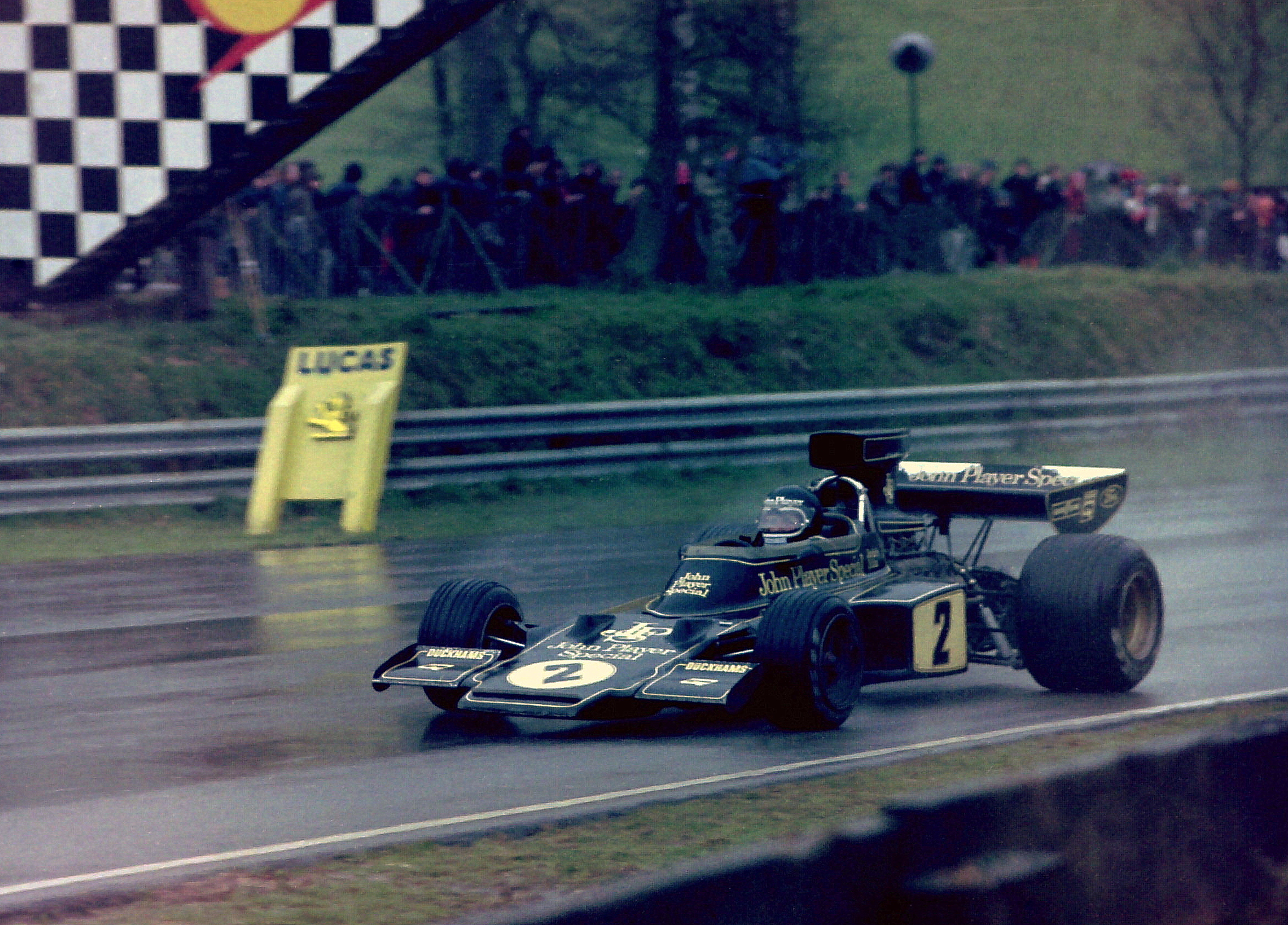
Ickx joined Team Lotus in 1974, a period that proved challenging for both driver and team. Lotus struggled to replace their successful but aging Lotus 72 with the problematic Lotus 76. Ickx secured a third-place finish at the 1974 Brazilian Grand Prix and won the non-championship 1974 Race of Champions at Brands Hatch, demonstrating his "Rain Master" prowess by passing Niki Lauda on the outside. However, his season deteriorated with a series of retirements. Despite the struggles, he showed glimpses of his skill, notably with a strong third-place finish at the 1974 British Grand Prix and a classic duel for fourth at the 1974 German Grand Prix on the daunting Nürburgring, a circuit that still lacked full safety barriers.
The 1975 Formula One season was even more disastrous for Lotus and Ickx, with the outdated Lotus 72 unable to compete effectively. His sole podium was a second-place finish in the chaotic, accident-marred 1975 Spanish Grand Prix, which was stopped before half distance. Ickx's qualifying times were generally slower than his teammate Ronnie Peterson. He left Lotus halfway through the season, though Colin Chapman hinted at a possible return with a new, competitive car, which never materialized.
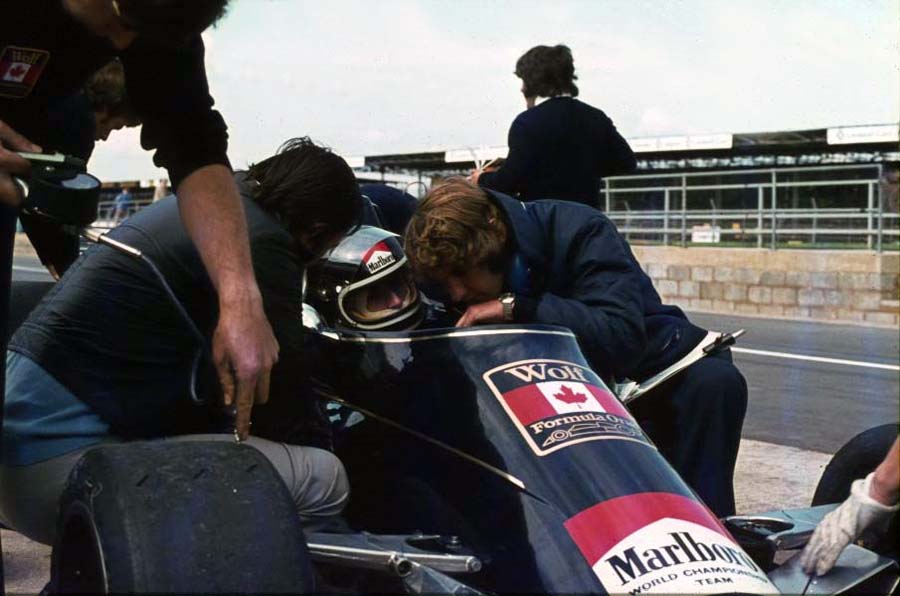
Ickx's Formula One career appeared to be winding down. In 1976, he began with Wolf-Williams Racing (then entering as Frank Williams Racing Cars). Despite a strong showing at the non-championship Race of Champions where he challenged for the lead, he failed to qualify for four World Championship races, a first in his career. He briefly joined Walter Wolf Racing and later moved to Ensign, replacing Chris Amon who had retired due to safety concerns after a severe crash. Ickx displayed flashes of speed with Ensign, particularly at the 1976 Dutch Grand Prix and 1976 Italian Grand Prix, but suffered a major crash at the 1976 United States Grand Prix that resulted in ankle injuries.
From 1977 to 1978, Ickx made only sporadic F1 appearances with Ensign, failing to score points and often struggling to qualify. By 1979, he was no longer competing regularly but returned to F1 with Ligier to replace the injured Patrick Depailler. Despite Ligier's success earlier in the season, Ickx struggled to adapt to the new ground effect cars, which he found dangerous and ill-suited to his precise driving style. He scored a fifth and a sixth place but retired from Formula One at the conclusion of the season after a final retirement at the 1979 United States Grand Prix. His decision reflected a growing focus on sports car racing, where he continued to achieve significant wins.
4. Endurance racing career
Jacky Ickx's most enduring legacy in motorsport stems from his extraordinary success in endurance racing, particularly at the 24 Hours of Le Mans, where he earned the moniker "Monsieur Le Mans."
4.1. Early success in endurance racing
Ickx demonstrated his proficiency in long-distance racing early in his career. In 1966, he partnered with Hubert Hahne to win the Spa 24 Hours in a BMW 2000TI. The following year, he won the 1000km of Spa with Dick Thompson in a Mirage M1 for the Gulf-liveried JW Automotive team. In 1968, he won the Brands Hatch six-hour endurance race with Brian Redman in a Ford GT40 Mk I. He would go on to win the Brands Hatch race three more times: in 1972 for Ferrari with Mario Andretti, and in 1977 and 1982 for Porsche with Jochen Mass and Derek Bell, respectively. He also won the Spa 1000km race in 1965 and 1966 in BMWs, and the Marathon de la Route in 1966.
4.2. Le Mans victories and safety advocacy
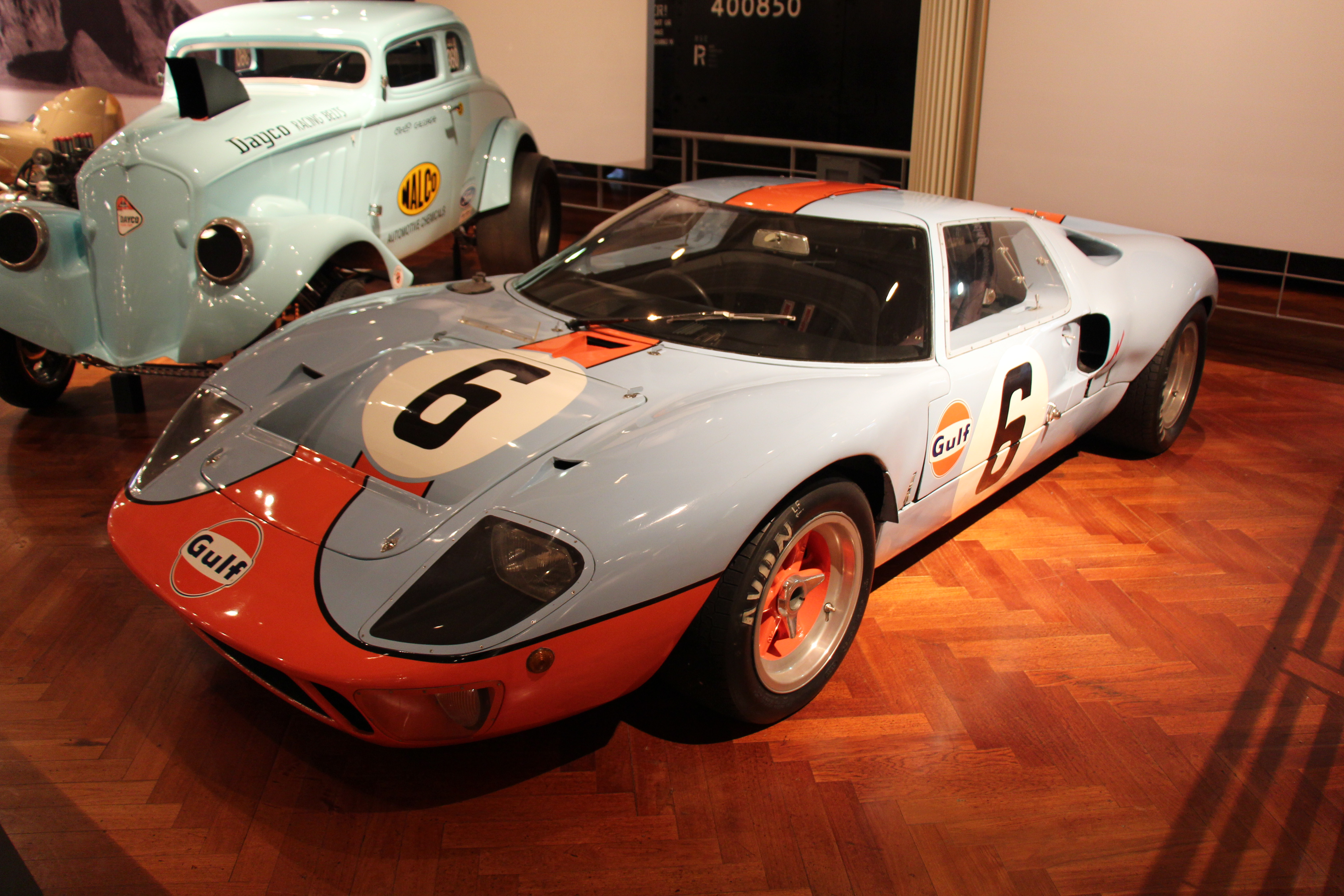
Jacky Ickx became a six-time winner of the 24 Hours of Le Mans, a record that stood until 2005. His first victory in 1969 was particularly notable for his principled stand against the traditional "Le Mans start." At the time, drivers would sprint across the track to their cars, often neglecting to properly fasten their safety belts to gain an early advantage. Viewing this as a dangerous practice, Ickx famously walked slowly across the track to his Ford GT40, taking the time to carefully secure his safety harness, starting last in the race. Tragically, on the first lap, privateer John Woolfe, driving a powerful Porsche 917, crashed fatally, having not taken the time to belt himself in. Ickx's protest, combined with this fatality, significantly influenced rule changes, leading to the abolition of the sprint start from 1970 onwards, with drivers permitted to start already seated and belted in their cars, and a rolling start introduced from 1971. This act cemented his reputation as a safety advocate.
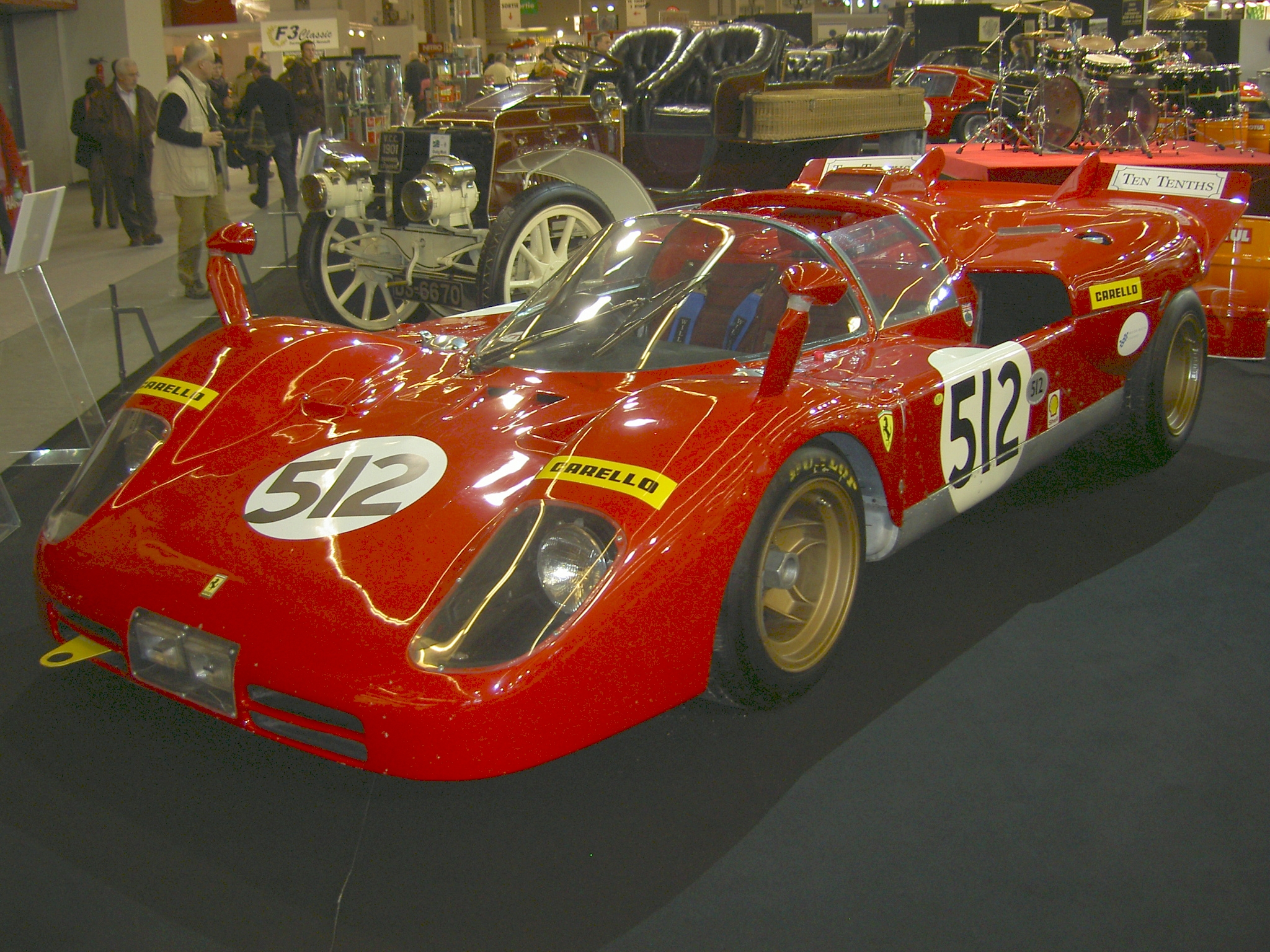
During the 1969 race, despite the Ford GT40 being considered obsolete compared to the new Porsche 917s, the Porsches proved unreliable. The final hours became a tense duel between Ickx and Jackie Oliver in their Ford GT40 and the Porsche 908 of Hans Herrmann and Gérard Larrousse. Ickx won by the smallest competitive margin ever at Le Mans, just 427 ft (130 m) separating the two cars at the finish line, despite his intentional slow start.
He went on to win Le Mans five more times: in 1975 with Derek Bell in a Mirage GR8 (a race they led throughout), in 1976 with Gijs van Lennep in a Porsche 936, and in 1977 with Jürgen Barth and Hurley Haywood in a Porsche 936/77. His 1977 victory is often cited as his favorite; after his initial Porsche 936 retired, he was transferred to a car running in 42nd place and made up laps to take the lead by morning, eventually winning despite a mechanical problem that forced the car to finish on five cylinders. His final two victories came with Derek Bell in 1981 and 1982, driving Porsche 936 and Porsche 956 models respectively. His partnership with Derek Bell became one of motorsport's most legendary.
Ickx famously commented on the Mulsanne Straight at Le Mans, saying that he could "smoke a cigar" while driving down it. This was a metaphorical statement, intended to express the exceptional handling of the car at speed, rather than a literal claim, as Ickx did not smoke.
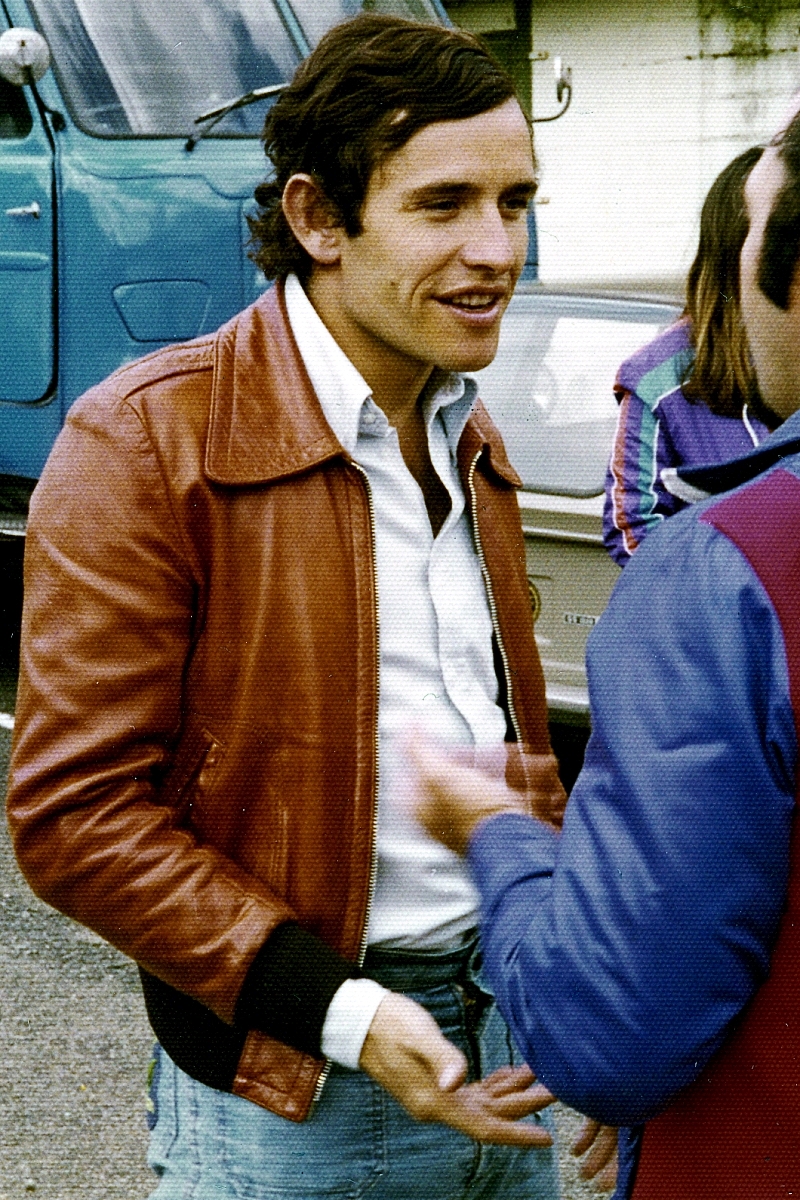
4.3. World Sportscar Championship and major incidents
Ickx was a dominant force in the World Sportscar Championship. In 1972, driving a Ferrari 312PB, he won the 12 Hours of Sebring and the 24 Hours of Daytona (which was a 6-hour race in 1972), contributing significantly to Ferrari's World Sportscar Championship title. These victories made him the fourth driver to complete the Triple Crown of endurance racing.
From 1976 onwards, he became a key factory driver for Porsche, piloting their new turbocharged Porsche 935 and Porsche 936 race cars, which led to three of his Le Mans victories. He clinched two consecutive World Endurance Championship titles in 1982 and 1983, driving the new and superior Porsche 956 model.
In 1983, a young German driver, Stefan Bellof, joined Porsche as his teammate and proved remarkably fast, setting new lap records at the Nürburgring. This setup would unfortunately lead to a tragic incident. In 1984, Ickx served as the Clerk of the Course for the Monaco Grand Prix. He controversially stopped the race prematurely due to heavy rain, just as young talents Ayrton Senna and Bellof were rapidly closing in on race leader Alain Prost. This decision resulted in Prost being awarded only half points, which ultimately cost him the 1984 World Championship to Niki Lauda by half a point. While the decision sparked debate, Ickx maintained that visibility was severely compromised due to the rain, making conditions too dangerous to continue.
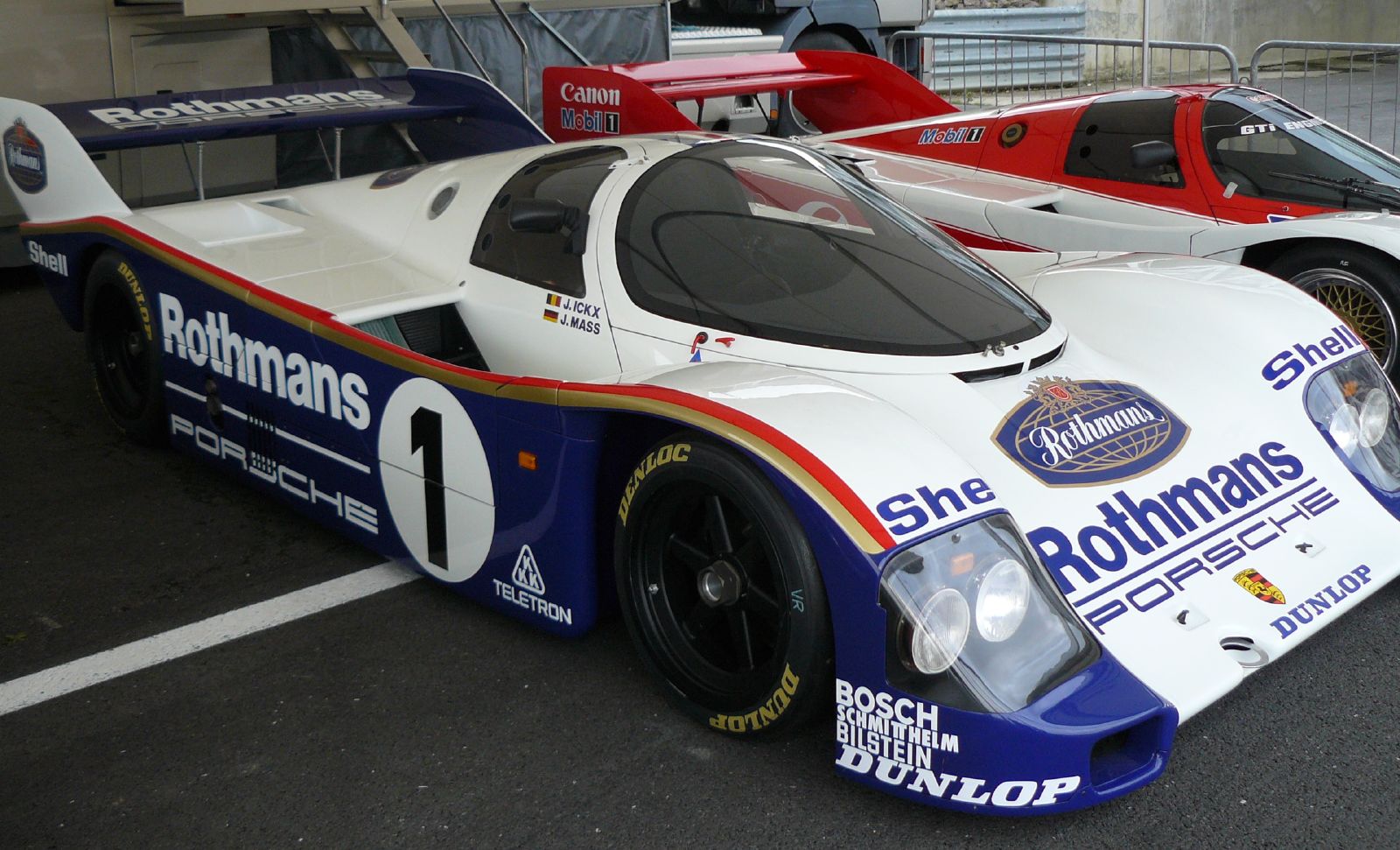
In 1985, Ickx was involved in a fatal incident with Stefan Bellof during the 1985 1000 km of Spa at his home track. Bellof, driving a privateer Porsche and reportedly waiting to join Ferrari in 1986, attempted to pass Ickx's factory Porsche 962 for the lead at the challenging Eau Rouge corner. The cars collided, and Bellof crashed into the barrier at Raidillon head-on, dying an hour later. Ickx emerged unharmed but deeply shaken. This tragic event marked the end of his professional circuit racing career; he retired at the end of the 1985 season.
5. Other racing disciplines
Beyond Formula One and endurance circuit racing, Jacky Ickx showcased his exceptional talent and adaptability across various other motorsport disciplines, achieving notable successes.
5.1. Dakar Rally
After retiring from professional circuit racing, Ickx continued to compete in the demanding Paris-Dakar Rally (now known as the Dakar Rally), an event that held special significance for him as its start often coincided with his birthday, January 1. He explained that his participation was driven by a belief that the Dakar Rally represented the "origin of automobile competition." He entered the rally 14 times between 1981 and 2000.
In 1981, he entered with a Citroën but retired. In 1982, driving a Mercedes-Benz, he finished fifth and won seven stages. His greatest success in the rally came in 1983, when he clinched the overall victory in a Mercedes-Benz G-Class, making him the only driver to have won both the 24 Hours of Le Mans and the Dakar Rally.
He continued his Dakar pursuits in the mid-1980s with Porsche, finishing sixth in a Porsche 911 4WD in 1984 and competing in a Porsche 959 prototype in 1985. In 1986, driving another Porsche 959, he retired after hitting a rock and damaging his front suspension. He then competed in a Lada Niva, a Soviet-made vehicle, in 1987. In 1989, driving a Peugeot 405 T16GR, he engaged in an intense battle for the lead with teammate Ari Vatanen. To avoid a team collision, team director Jean Todt controversially decided the outcome by a coin toss, which Ickx lost, finishing second overall. This decision drew strong criticism from the International Automobile Federation (FISA), whose president condemned it as "an act of sacrilege against motorsport." He returned with Lada in 1990, finishing seventh. From 1991, he raced with Citroën Sport, retiring in 1991 due to mechanical issues but finishing sixth in 1992. He also competed in later editions of the rally with his daughter, Vanina Ickx.
5.2. Canadian-American Challenge Cup and other races
Ickx's versatility extended to North American racing. In 1979, he competed in the newly revived Can-Am series, driving a Lola T333CS-Chevrolet. He faced strong competition from drivers like Keke Rosberg, Elliot Forbes-Robinson, and Bobby Rahal. Ickx demonstrated his superior pace and consistency, winning five of the nine races and ultimately securing the series championship decisively at the season finale at Riverside International Raceway. He chose not to defend his title the following season.
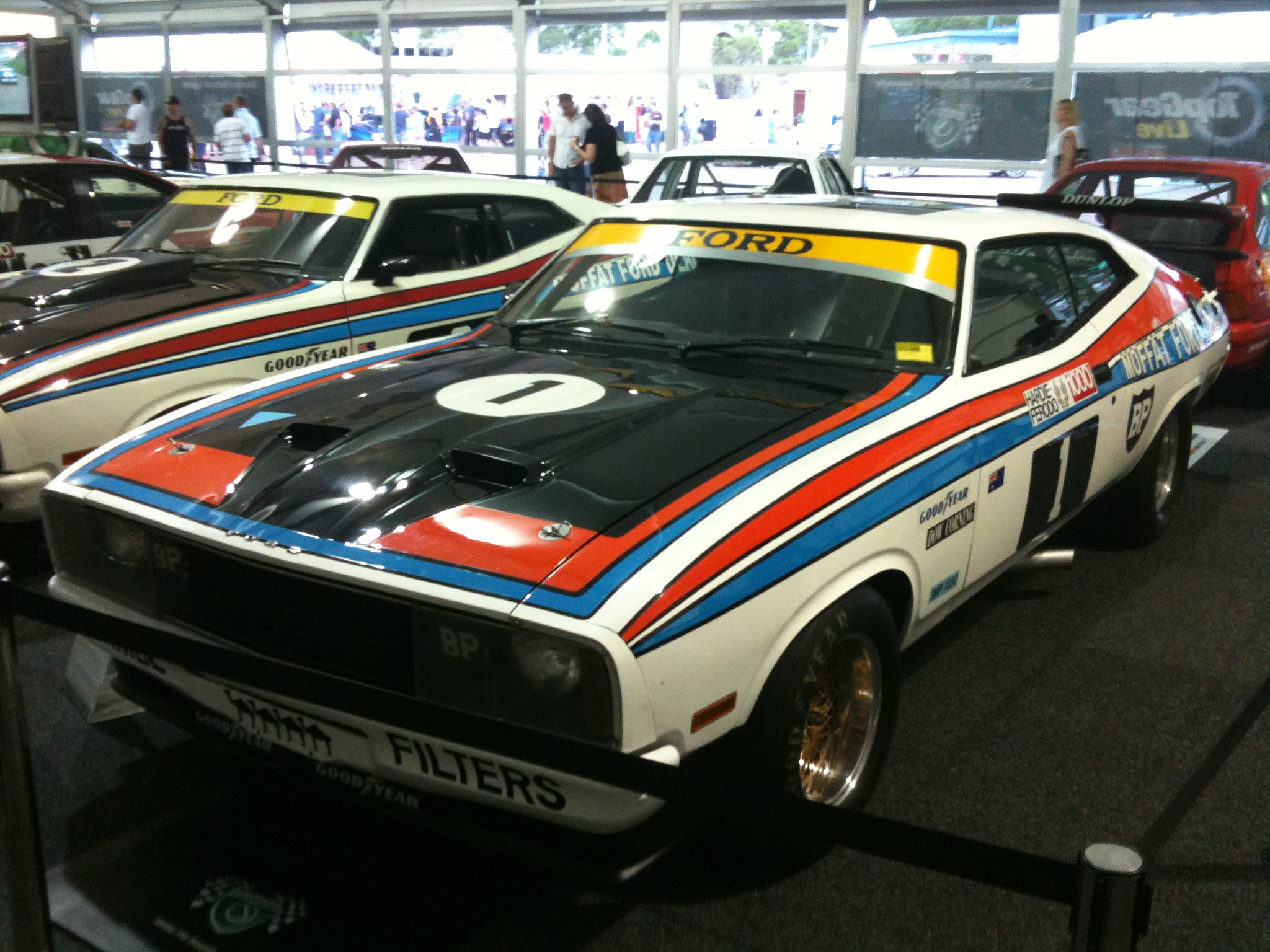
In Australia, Ickx co-drove with Allan Moffat to win the 1977 Hardie-Ferodo 1000 at Bathurst, driving a specially modified Australian-made Ford XC Falcon. He adapted quickly to the unfamiliar car and circuit, matching or exceeding the lap times of local experts. He remained the last debutant to win the race until 2011. He was also selected to participate in the International Race of Champions (IROC) in 1978 and 1984, further showcasing his skill across different racing platforms.
Ickx was also scheduled to race in the 1969 Daytona 500, a major NASCAR event, despite never having driven a stock car. However, he crashed his car during practice, damaging it beyond repair. As the team's only backup car was needed by eventual race winner LeeRoy Yarbrough, Ickx was unable to compete.
6. Beyond the racing track
Jacky Ickx's influence extends far beyond his competitive driving career. He has remained an active and respected figure in motorsport, contributing in various official capacities and supporting the next generation of drivers.
6.1. Motorsport official roles
Following his retirement from professional racing, Ickx assumed official roles within motorsport. He served as the Clerk of the Course for the prestigious Monaco Grand Prix. This role, particularly his decision to stop the 1984 race due to torrential rain, became a subject of debate. Despite the controversy, Ickx maintained that the extreme weather conditions made continuing the race unsafe, prioritizing driver welfare.
6.2. Contributions to motorsport development
Ickx has actively supported young Belgian drivers in their ascent to top-tier categories like Formula One, acting as a crucial link between emerging talents and the sport's highest echelons. Notable beneficiaries of his guidance include Thierry Boutsen and Bertrand Gachot.
In 1991, Ickx served as a supervisor for the Mazdaspeed team at the 24 Hours of Le Mans, providing invaluable consultation that contributed to Mazda's historic victory with the Mazda 787B. Demonstrating his integrity, Ickx reportedly refused a bonus offered by Mazda, stating that his contract was to help them win, and that victory alone was sufficient reward.
He is also known for anecdotes highlighting his perspective on cars and racing. In 1983, he notably drove a Lamborghini Countach LP400S as a safety car at the Monaco Grand Prix. He expressed a preference for the comfort, quietness, ease of maintenance, and versatility of cars like the Mercedes-Benz 500SEL and Porsche 928S for personal use.
Ickx remains a presence in historic motorsport events, such as the Goodwood Festival of Speed and the Monterey Historics, often representing brands like Porsche, Ferrari, and Genesis. Despite past health concerns, he also served as the Grand Marshal for the 2018 24 Hours of Le Mans, signifying his enduring status in the racing world. He maintains a close friendship with Japanese journalist Joe Honda, with whom he has shared humorous anecdotes about racing.
7. Personal life
Jacky Ickx's personal life has seen him surrounded by family, many of whom also pursued careers in motorsport.
7.1. Family and residence
Jacky Ickx has been married multiple times. His first marriage was to Catherine Blaton, with whom he had a daughter, Vanina Ickx, who followed in her father's footsteps to become a racing driver. He later married Maroussia Janssens and is currently married to the Burundian singer Khadja Nin. He has five children in total.
His father, Jacques Ickx, was a motoring journalist and also a racing driver. His older brother, Pascal Ickx, was also a racing driver, continuing the family's deep involvement in motorsport.
Ickx initially resided in Brussels, Belgium, where he was born. In the early 1980s, he relocated to Monaco. However, he currently resides in Brussels.
8. Awards and honours
Jacky Ickx has received numerous accolades and recognitions throughout his illustrious career, celebrating his achievements and contributions to motorsport.
8.1. Major awards and titles
Ickx holds the record for the most RACB Belgian Driver's Champion titles, having won it in 1967, 1968, 1969, 1970, 1971, 1972, 1973, 1974, 1976, 1977, 1979, and 1982.
His other significant awards and titles include:
- Belgian National Sports Merit Award: 1968
- Belgian Sportsman of the Year: 1982
- ACO Spirit of Le Mans trophy: 2004
- Paris International Automobile Festival Palme d'Or: 2012
- Autosprint - Helmet Legend: 2014
- World Sports - Legends Award: 2017
- Autosport Awards - Gregor Grant Award (lifetime achievement honor): 2018
8.2. Hall of Fame inductions and special recognitions
In addition to his competitive titles, Ickx has received several prestigious honours and special recognitions:
- Named an 'Honorary Citizen of Le Mans' prior to the 2000 race, making him the first sports person to receive this distinction.
- Inducted into the International Motorsports Hall of Fame in 2002.
- Ranked 3rd in the RTBF poll for Best Belgian Sportsman Ever in 2014, behind Eddy Merckx and ahead of Jean-Michel Saive and Stefan Everts.
- In honor of his 75th birthday in 2019, Porsche created a special edition of its 911 (992) model called the Carrera 4S Belgian Legend Edition. The car is painted in X-Blue with white trim around the side windows, inspired by Ickx's iconic helmet design.
- Inducted into the Motorsports Hall of Fame of America in 2020.
- Awarded the Bronze Zinneke in Brussels.
He has also received national decorations from Belgium and Monaco:
- Officer in the Belgian Order of the Crown: 2000
- Officer in the Monegasque Order of Saint-Charles: 2000
- Grand Officer in the Belgian Order of Leopold II: 2007
9. Legacy and influence
Jacky Ickx's legacy in motorsport is defined by his extraordinary versatility, his distinctive driving style, and his unwavering commitment to safety.
9.1. Overall assessment and reputation
Ickx is universally recognized as one of the most versatile and respected drivers in motorsport history. His ability to excel across various disciplines, from Formula One and endurance racing to rallying, highlights his exceptional skill and adaptability. His six victories at the 24 Hours of Le Mans earned him the enduring nickname "Monsieur Le Mans" or "The King of Le Mans." Beyond his competitive prowess, Ickx is particularly remembered for his principled stand on driver safety, most notably his protest against the traditional "Le Mans start" in 1969. This act, driven by a concern for human lives over competitive advantage, influenced fundamental rule changes that improved safety across the sport. His critical analysis of racing conditions, such as the Nürburgring debates with Jackie Stewart and his decision as Clerk of the Course at Monaco, further underscore his commitment to responsible competition. His reflections on events like Jochen Rindt's posthumous championship and the tragic death of Stefan Bellof showcase a profound ethical dimension to his approach to racing.
9.2. In popular culture
Jacky Ickx's enduring appeal has seen him featured in popular culture. He often appears as a main character in the famous French comic series Michel Vaillant. The Chopard Company has developed multiple limited-edition Chopard Mille Miglia Jacky Ickx Men's watches, with one designed in direct cooperation with him, further cementing his iconic status in the automotive world.
10. Racing record
10.1. Career summary
| Season | Series | Team | Races | Wins | Poles | F/laps | Podiums | Points | Position |
|---|---|---|---|---|---|---|---|---|---|
| 1966 | Formula One | Tyrrell Racing Organisation | 1 | 0 | 0 | 0 | 0 | 0 | NC |
| 24 Hours of Le Mans | Essex Wire Corporation | 1 | 0 | 0 | 0 | 0 | N/A | DNF | |
| British Saloon Car Championship | Team Lotus | 4 | 0 | 0 | 0 | 1 | 20 | 12th | |
| British Saloon Car Championship - Class C | 4 | 1 | 0 | 1 | 3 | 20 | 3rd | ||
| 1967 | European Formula Two | Tyrrell Racing Organisation | 8 | 1 | 2 | 3 | 4 | 45 | 1st |
| World Sportscar Championship | J.W. Automotive | 3 | 1 | 0 | 0 | 1 | 10 | NC | |
| Formula One | Cooper Car Company | 2 | 0 | 0 | 0 | 0 | 1 | 21st | |
| Tyrrell Racing Organisation | 1 | 0 | 0 | 0 | 0 | ||||
| 24 Hours of Le Mans | J.W. Automotive | 1 | 0 | 0 | 0 | 0 | N/A | DNF | |
| British Saloon Car Championship | Team Lotus | 3 | 0 | 0 | 0 | 2 | 16 | 15th | |
| British Saloon Car Championship - Class C | 3 | 2 | 0 | 1 | 2 | 16 | 4th | ||
| 1968 | Formula One | Scuderia Ferrari SpA SEFAC | 9 | 1 | 1 | 0 | 4 | 27 | 4th |
| World Sportscar Championship | J.W. Automotive Engineering, Ltd. | 4 | 3 | 0 | 1 | 4 | 28 | NC | |
| European Formula Two | Scuderia Ferrari | 2 | 0 | 0 | 0 | 0 | 0 | NC | |
| 1969 | Formula One | Motor Racing Developments Ltd | 11 | 2 | 2 | 3 | 5 | 37 | 2nd |
| World Sportscar Championship | J.W. Automotive Engineering, Ltd. | 2 | 2 | 0 | 0 | 2 | 16 | NC | |
| 24 Hours of Le Mans | 1 | 1 | 0 | 0 | 1 | N/A | 1st | ||
| European Formula Two | Alejandro de Tomaso | 1 | 0 | 0 | 0 | 0 | 0 | NC | |
| 1970 | Formula One | Scuderia Ferrari SpA SEFAC | 13 | 3 | 4 | 5 | 5 | 40 | 2nd |
| European Formula Two Championship | Bayerische Motoren Werke | 5 | 1 | 1 | 1 | 2 | 0 | NC | |
| World Sportscar Championship | SpA Ferrari SEFAC | 4 | 0 | 1 | 0 | 2 | 12 | NC | |
| 24 Hours of Le Mans | 1 | 0 | 0 | 0 | 0 | N/A | DNF | ||
| 1971 | Formula One | Scuderia Ferrari SpA SEFAC | 11 | 1 | 2 | 2 | 3 | 19 | 4th |
| World Sportscar Championship | 7 | 0 | 2 | 1 | 1 | 6 | NC | ||
| 1972 | Formula One | Scuderia Ferrari SpA SEFAC | 12 | 1 | 4 | 3 | 4 | 27 | 4th |
| World Sportscar Championship | 9 | 6 | 3 | 4 | 7 | 136 | NC | ||
| 1973 | Formula One | Scuderia Ferrari SpA SEFAC | 10 | 0 | 0 | 0 | 0 | 12 | 9th |
| Yardley Team McLaren | 1 | 0 | 0 | 0 | 1 | ||||
| Frank Williams Racing Cars | 1 | 0 | 0 | 0 | 0 | ||||
| World Sportscar Championship | SpA Ferrari SEFAC | 9 | 2 | 1 | 0 | 6 | 94 | NC | |
| 24 Hours of Le Mans | 1 | 0 | 0 | 0 | 0 | N/A | DNF | ||
| 1974 | Formula One | John Player Team Lotus | 15 | 0 | 0 | 0 | 2 | 12 | 10th |
| World Sportscar Championship | Autodelta SpA | 3 | 0 | 0 | 1 | 1 | 55 | NC | |
| Equipe Gitanes | 1 | 1 | 0 | 1 | 1 | ||||
| Gulf Research Racing | 1 | 0 | 0 | 0 | 1 | ||||
| BMW Motorsport | 1 | 0 | 0 | 0 | 0 | ||||
| 1975 | Formula One | John Player Team Lotus | 9 | 0 | 0 | 0 | 1 | 3 | 16th |
| World Sportscar Championship | Willi Kauhsen Racing Team | 2 | 0 | 1 | 1 | 2 | 30 | NC | |
| 24 Hours of Le Mans | Gulf Research Racing Co. | 1 | 0 | 0 | 0 | 1 | N/A | 1st | |
| 1976 | World Championship for Makes | Martini Racing Porsche System | 6 | 3 | 5 | 4 | 4 | 73 | NC |
| World Sportscar Championship | 4 | 3 | 1 | 0 | 4 | 80 | NC | ||
| Formula One | Team Ensign | 4 | 0 | 0 | 0 | 0 | 0 | NC | |
| Frank Williams Racing Cars | 2 | 0 | 0 | 0 | 0 | ||||
| Walter Wolf Racing | 2 | 0 | 0 | 0 | 0 | ||||
| 24 Hours of Le Mans | Martini Racing Porsche System | 1 | 0 | 0 | 0 | 1 | N/A | 1st | |
| 1977 | World Championship for Makes | Martini Racing Porsche System | 7 | 3 | 6 | 2 | 3 | 60 | NC |
| 24 Hours of Le Mans | 1 | 1 | 0 | 1 | 1 | N/A | 1st | ||
| Formula One | Team Tissot Ensign with Castrol | 1 | 0 | 0 | 0 | 0 | 0 | NC | |
| 1978 | World Sportscar Championship | Martini Racing Porsche System | 3 | 1 | 2 | 1 | 1 | 35 | NC |
| Max Moritz | 1 | 0 | 0 | 0 | 1 | ||||
| Formula One | Team Tissot Ensign | 3 | 0 | 0 | 0 | 0 | 0 | NC | |
| 24 Hours of Le Mans | Martini Racing Porsche System | 1 | 0 | 1 | 0 | 1 | N/A | 2nd | |
| 1979 | Formula One | Ligier Gitanes | 8 | 0 | 0 | 0 | 0 | 3 | 16th |
| Can-Am | Carl A. Haas Racing Team | 5 | 5 | 0 | 2 | 5 | 0 | 1st | |
| World Sportscar Championship | Georg Loos | 3 | 0 | 0 | 0 | 2 | 30 | NC | |
| 24 Hours of Le Mans | Essex Motorsport Porsche | 1 | 0 | 0 | 1 | 0 | N/A | DNF | |
| 1980 | 24 Hours of Le Mans | Equipe Liqui Moly - Martini Racing | 1 | 0 | 0 | 1 | 1 | N/A | 2nd |
| 1981 | 24 Hours of Le Mans | Porsche System | 1 | 1 | 1 | 0 | 1 | N/A | 1st |
| 1982 | World Sportscar Championship | Rothmans Porsche System | 5 | 4 | 3 | 1 | 5 | 95 | 1st |
| 24 Hours of Le Mans | Porsche System | 1 | 1 | 1 | 0 | 1 | N/A | 1st | |
| 1983 | World Sportscar Championship | Rothmans Porsche | 7 | 2 | 2 | 1 | 6 | 97 | 1st |
| 1984 | World Sportscar Championship | Rothmans Porsche | 8 | 2 | 0 | 0 | 6 | 104 | 3rd |
| 1985 | World Sportscar Championship | Rothmans Porsche | 10 | 3 | 2 | 0 | 5 | 101 | 3rd |
10.2. Complete British Saloon Car Championship results
(Races in bold indicate pole position; races in italics indicate fastest lap.)
| Year | Team | Car | Class | 1 | 2 | 3 | 4 | 5 | 6 | 7 | 8 | 9 | 10 | Pos. | Pts | Class |
|---|---|---|---|---|---|---|---|---|---|---|---|---|---|---|---|---|
| 1966 | Team Lotus | Ford Cortina Lotus | SNE | GOO | SIL (ovr:4, cls:2) | CRY (ovr:3, cls:1) | BRH (ovr:5, cls:2) | BRH | OUL | BRH (Ret) | 12th | 20 | 3rd | |||
| 1967 | Team Lotus | Ford Cortina Lotus | BRH | SNE | SIL | SIL | MAL (ovr:3, cls:1) | SIL | SIL | BRH (ovr:2, cls:1) | OUL (Ret) | BRH | 15th | 16 | 4th |
10.3. Complete Formula One World Championship results
(Races in bold indicate pole position; results in italics indicate fastest lap)
| Year | Entrant | Chassis | Engine | 1 | 2 | 3 | 4 | 5 | 6 | 7 | 8 | 9 | 10 | 11 | 12 | 13 | 14 | 15 | 16 | 17 | World Drivers' Championship | Pts |
|---|---|---|---|---|---|---|---|---|---|---|---|---|---|---|---|---|---|---|---|---|---|---|
| 1966 | Tyrrell Racing Organisation | Matra MS5 (F2) | Ford Cosworth SCA 1.0 L4 | MON | BEL | FRA | GBR | NED | GER Ret | ITA | USA | MEX | NC | 0 | ||||||||
| 1967 | Tyrrell Racing Organisation | Matra MS5 (F2) | Ford Cosworth FVA 1.6 L4 | RSA | MON | NED | BEL | FRA | GBR | GER Ret | CAN | 21st | 1 | |||||||||
| Cooper Car Company | Cooper T81B | Maserati 10/F1 3.0 V12 | ITA 6 | |||||||||||||||||||
| Cooper T86 | USA Ret | MEX | ||||||||||||||||||||
| 1968 | Scuderia Ferrari SpA SEFAC | Ferrari 312/67 | Ferrari 242 3.0 V12 | RSA Ret | 4th | 27 | ||||||||||||||||
| Ferrari 312/68 | Ferrari 242C 3.0 V12 | ESP Ret | MON | NED 4 | FRA 1 | GBR 3 | GER 4 | ITA 3 | CAN DNS | USA | ||||||||||||
| Ferrari 312/67/68 | Ferrari 242 3.0 V12 | BEL 3 | MEX Ret | |||||||||||||||||||
| 1969 | Motor Racing Developments Ltd | Brabham BT26A | Ford Cosworth DFV 3.0 V8 | RSA Ret | ESP 6 | MON Ret | NED 5 | FRA 3 | GBR 2 | GER 1 | ITA 10 | CAN 1 | USA Ret | MEX 2 | 2nd | 37 | ||||||
| 1970 | Scuderia Ferrari SpA SEFAC | Ferrari 312B | Ferrari 001 3.0 F12 | RSA Ret | ESP Ret | MON Ret | BEL 8 | NED 3 | FRA Ret | GBR Ret | GER 2 | AUT 1 | ITA Ret | CAN 1 | USA 4 | MEX 1 | 2nd | 40 | ||||
| 1971 | Scuderia Ferrari SpA SEFAC | Ferrari 312B | Ferrari 001 3.0 F12 | RSA 8 | ESP 2 | ITA Ret | USA Ret | 4th | 19 | |||||||||||||
| Ferrari 312B2 | Ferrari 001/1 3.0 F12 | MON 3 | NED 1 | FRA Ret | GBR Ret | GER Ret | AUT Ret | CAN 8 | ||||||||||||||
| 1972 | Scuderia Ferrari SpA SEFAC | Ferrari 312B2 | Ferrari 001/1 3.0 F12 | ARG 3 | RSA 8 | ESP 2 | MON 2 | BEL Ret | FRA 11 | GBR Ret | GER 1 | AUT Ret | ITA Ret | CAN 12 | USA 5 | 4th | 27 | |||||
| 1973 | Scuderia Ferrari SpA SEFAC | Ferrari 312B2 | Ferrari 001/1 3.0 F12 | ARG 4 | BRA 5 | RSA Ret | 9th | 12 | ||||||||||||||
| Ferrari 312B3 | Ferrari 001/11 3.0 F12 | ESP 12 | BEL Ret | MON Ret | SWE 6 | FRA 5 | GBR 8 | NED | ITA 8 | CAN | ||||||||||||
| Yardley Team McLaren | McLaren M23 | Ford Cosworth DFV 3.0 V8 | GER 3 | AUT | ||||||||||||||||||
| Frank Williams Racing Cars | Iso-Marlboro IR | Ford Cosworth DFV 3.0 V8 | USA 7 | |||||||||||||||||||
| 1974 | John Player Team Lotus | Lotus 72E | Ford Cosworth DFV 3.0 V8 | ARG Ret | BRA 3 | MON Ret | SWE Ret | NED 11 | FRA 5 | GBR 3 | GER 5 | CAN 13 | USA Ret | 10th | 12 | |||||||
| Lotus 76 | RSA Ret | ESP Ret | BEL Ret | AUT Ret | ITA Ret | |||||||||||||||||
| 1975 | John Player Team Lotus | Lotus 72E | Ford Cosworth DFV 3.0 V8 | ARG 8 | BRA 9 | RSA 12 | ESP 2 | MON 8 | BEL Ret | SWE 15 | NED Ret | FRA Ret | GBR | GER | AUT | ITA | USA | 16th | 3 | |||
| 1976 | Frank Williams Racing Cars | Wolf-Williams FW05 | Ford Cosworth DFV 3.0 V8 | BRA 8 | RSA 16 | USW DNQ | NC | 0 | ||||||||||||||
| Walter Wolf Racing | ESP 7 | BEL DNQ | MON DNQ | SWE | FRA 10 | GBR DNQ | GER | AUT | ||||||||||||||
| Team Tissot Ensign | Ensign N176 | NED Ret | ITA 10 | CAN 13 | USA Ret | JPN | ||||||||||||||||
| 1977 | Team Tissot Ensign with Castrol | Ensign N177 | Ford Cosworth DFV 3.0 V8 | ARG | BRA | RSA | USW | ESP | MON 10 | BEL | SWE | FRA | GBR | GER | AUT | NED | ITA | USA | CAN | JPN | NC | 0 |
| 1978 | Team Tissot Ensign | Ensign N177 | Ford Cosworth DFV 3.0 V8 | ARG | BRA | RSA | USW | MON Ret | BEL 12 | ESP Ret | SWE DNQ | FRA | GBR | GER | AUT | NED | ITA | USA | CAN | NC | 0 | |
| 1979 | Ligier Gitanes | Ligier JS11 | Ford Cosworth DFV 3.0 V8 | ARG | BRA | RSA | USW | ESP | BEL | MON | FRA Ret | GBR 6 | GER Ret | AUT Ret | NED 5 | ITA Ret | CAN Ret | USA Ret | 16th | 3 |
10.4. Complete Formula One non-championship results
(Races in bold indicate pole position) (Races in italics indicate fastest lap)
| Year | Entrant | Chassis | Engine | 1 | 2 | 3 | 4 | 5 | 6 | 7 | 8 |
|---|---|---|---|---|---|---|---|---|---|---|---|
| 1967 | Matra Sports | Matra MS5 (F2) | Ford Cosworth FVA 1.6 L4 | ROC Ret | SPC | INT | SYR | ||||
| Tyrrell Racing Organisation | OUL Ret | ESP 6 | |||||||||
| 1968 | Scuderia Ferrari SpA SEFAC | Ferrari 312/67 | Ferrari 242 3.0 V12 | ROC 8 | |||||||
| Ferrari 312/68 | Ferrari 242C 3.0 V12 | INT 4 | OUL Ret | ||||||||
| 1969 | Motor Racing Developments Ltd | Brabham BT26A | Ford Cosworth DFV 3.0 V8 | ROC Ret | INT 4 | MAD | OUL 1 | ||||
| 1971 | Scuderia Ferrari SpA SEFAC | Ferrari 312B | Ferrari 001 3.0 F12 | ARG | ROC | QUE 11 | SPR | INT | RIN 1 | OUL | VIC |
| 1974 | John Player Team Lotus | Lotus 72E | Ford Cosworth DFV 3.0 V8 | PRE | ROC 1 | INT | |||||
| 1975 | John Player Team Lotus | Lotus 72E | Ford Cosworth DFV 3.0 V8 | ROC 4 | INT | SUI | |||||
| 1976 | Frank Williams Racing Cars | Wolf-Williams FW05 | Ford Cosworth DFV 3.0 V8 | ROC 3 | INT Ret | ||||||
| 1978 | Team Tissot Ensign | Ensign N177 | Ford Cosworth DFV 3.0 V8 | INT Ret |
10.5. Complete European Formula Two Championship results
(Races in bold indicate pole position; races in italics indicate fastest lap)
| Year | Entrant | Chassis | Engine | 1 | 2 | 3 | 4 | 5 | 6 | 7 | 8 | 9 | 10 | Pos. | Pts |
|---|---|---|---|---|---|---|---|---|---|---|---|---|---|---|---|
| 1967 | Tyrrell Racing Organisation | Matra MS5 | Ford | SNE DNQ | SIL 7 | NÜR 3 | HOC 10 | ZAN 1 | PER 3 | BRH 5 | 1st | 45 | |||
| Matra MS7 | TUL 5 | JAR | VAL 1 | ||||||||||||
| 1968 | Scuderia Ferrari | Ferrari 166 | Ferrari | HOC | THR | JAR | PAL Ret | TUL | ZAN | PER 6 | HOC | VAL | NC | 0 | |
| 1969 | Alejandro de Tomaso | De Tomaso 103 | Ford | THR | HOC | NÜR | JAR | TUL | PER Ret | VAL | NC | 0 | |||
| 1970 | Bayerische Motoren Werke | BMW 270 | BMW | THR 6 | HOC | BAR | ROU 4 | PER 3 | TUL 1 | IMO Ret | HOC | NC | 0 |
10.6. Complete 24 Hours of Le Mans results
| Year | Team | Co-drivers | Car | Class | Laps | Pos. | Class pos. |
|---|---|---|---|---|---|---|---|
| 1966 | Essex Wire Corporation | Jochen Neerpasch | Ford GT40 Mk.I | S 5.0 | 154 | DNF | DNF |
| 1967 | John Wyer Automotive Engineering | Brian Muir | Mirage M1-Ford | P +5.0 | 29 | DNF | DNF |
| 1969 | John Wyer Automotive Engineering | Jackie Oliver | Ford GT40 Mk.I | S 5.0 | 372 | 1st | 1st |
| 1970 | SpA Ferrari SEFAC | Peter Schetty | Ferrari 512S | S 5.0 | 142 | DNF | DNF |
| 1973 | SpA Ferrari SEFAC | Brian Redman | Ferrari 312PB | S 3.0 | 332 | DNF | DNF |
| 1975 | Gulf Research Racing Co. | Derek Bell | Mirage GR8-Ford Cosworth | S 3.0 | 336 | 1st | 1st |
| 1976 | Martini Racing Porsche System | Gijs van Lennep | Porsche 936 | S 3.0 | 349 | 1st | 1st |
| 1977 | Martini Racing Porsche System | Jürgen Barth | Porsche 936/77 | S +2.0 | 342 | 1st | 1st |
| 1978 | Martini Racing Porsche System | Bob Wollek | Porsche 936/78 | S +2.0 | 364 | 2nd | 2nd |
| 1979 | Essex Motorsport Porsche | Brian Redman | Porsche 936 | S +2.0 | 200 | DNF | DNF |
| 1980 | Equipe Liqui Moly - Martini Racing | Reinhold Joest | Porsche 908/80 | S +2.0 | 336 | 2nd | 2nd |
| 1981 | Porsche System | Derek Bell | Porsche 936 | S +2.0 | 354 | 1st | 1st |
| 1982 | Rothmans Porsche System | Derek Bell | Porsche 956 | C | 359 | 1st | 1st |
| 1983 | Rothmans Porsche | Derek Bell | Porsche 956 | C | 370 | 2nd | 2nd |
| 1985 | Rothmans Porsche | Jochen Mass | Porsche 962C | C1 | 348 | 10th | 10th |
10.7. Complete World Sportscar Championship results
(Races in bold indicate pole position; results in italics indicate fastest lap)
| Year | Entrant | Chassis | Engine | Class | 1 | 2 | 3 | 4 | 5 | 6 | 7 | 8 | 9 | 10 | 11 | 12 | 13 | 14 | 15 |
|---|---|---|---|---|---|---|---|---|---|---|---|---|---|---|---|---|---|---|---|
| 1966 | Ecurie Francorchamps | Ferrari 250LM | Ferrari V12 | P+2.0 | DAY Ret | SEB | MZA | TGA | SPA | NÜR | |||||||||
| Essex Wire Corporation | Ford GT40 Mk.I | Ford V8 | LMS Ret | HOC | |||||||||||||||
| 1967 | J.W. Automotive Engineering, Ltd. | Ford GT40 Mk.I (Mirage) | Ford V8 | DAY 6 | SEB | ||||||||||||||
| Mirage M1 | Ford V8 | MZA Ret | SPA 1 | TGA | NÜR Ret | LMS Ret | BRH | ||||||||||||
| 1968 | J.W. Automotive Engineering, Ltd. | Ford GT40 Mk.I (Mirage) | Ford V8 | S 5.0 | DAY Ret | SEB Ret | BRH 1 | MZA Ret | TGA | NÜR 3 | SPA 1 | WGN 1 | ZEL | LMS | |||||
| 1969 | J.W. Automotive Engineering, Ltd. | Ford GT40 Mk.I (Mirage) | Ford V8 | DAY 26 | SEB 1 | LMS 1 | |||||||||||||
| Mirage M1 | Ford V8 | BRH Ret | MZA | TGA | SPA Ret | NÜR Ret | WGN Ret | ÖST Ret | |||||||||||
| 1970 | SpA Ferrari SEFAC | Ferrari 512S | Ferrari V12 | DAY 3 | SEB Ret | BRH 8 | MZA 3 | TGA | SPA 2 | NÜR DNS | WGN 8 | ||||||||
| Ferrari 512S Coda Lunga | LMS Ret | ||||||||||||||||||
| Ferrari 512M | ÖST Ret | ||||||||||||||||||
| 1971 | SpA Ferrari SEFAC | Ferrari 312PB | Ferrari F12 | P 3.0 | BUE | DAY | SEB Ret | BRH 2 | MZA Ret | SPA 8 | TGA | NÜR Ret | LMS | ÖST Ret | WGN Ret | ||||
| 1972 | SpA Ferrari SEFAC | Ferrari 312PB | Ferrari F12 | BUE 8 | DAY 1 | SEB 1 | BRH 1 | MZA 1 | SPA 2 | TGA | NÜR Ret | LMS | ÖST 1 | WGN 1 | |||||
| 1973 | SpA Ferrari SEFAC | Ferrari 312PB | Ferrari F12 | DAY | VAL 3 | DIJ 2 | MZA 1 | SPA Ret | TGA Ret | NÜR 1 | LMS Ret | ÖST 3 | WGN 2 | ||||||
| 1974 | Autodelta SpA | Alfa Romeo 33TT12 | Alfa Romeo F12 | P 3.0 | MZA 2 | IMO Ret | LMS | ÖST 5 | WGN | ||||||||||
| Equipe Gitanes | Matra-Simca MS670C | Matra V12 | SPA 1 | ||||||||||||||||
| BMW Motorsport GmbH | BMW 3.0 CSL | BMW L6 | T+ 2000 | NÜR Ret | |||||||||||||||
| Gulf Research Racing | Mirage GR7 | Ford-Cosworth V8 | P 3.0 | RIC 3 | BRH | KYA | |||||||||||||
| 1975 | Willi Kauhsen Racing Team | Alfa Romeo 33TT12 | Alfa Romeo F12 | P 3.0 | DAY | MUG 2 | DIJ 1 | MZA | SPA 2 | ENN Ret | NÜR | ÖST | WGN | ||||||
| 1976 (Drivers) | Martini Racing Porsche System | Porsche 936 | Porsche F6 (t/c) | Group 6 | NÜR | MZA 1 | IMO 1 | ENN | MOS 3 | DIJ 1 | SLZ | ||||||||
| 1976 (Makes) | Martini Racing Porsche System | Porsche 935 | Porsche F6 (t/c) | Group 5 | MUG 1 | VAL 1 | SIL 10 | NÜR | ÖST Ret | WGN 3 | DIJ 1 | ||||||||
| 1977 (Makes) | Martini Racing Porsche System | Porsche 935 | Porsche F6 (t/c) | DAY Ret | MUG | SIL 1 | NÜR Ret | WGN 1 | MOS 21 | BRH 1 | HOC 1 | VAL | |||||||
| 1978 | Martini Racing Porsche System | Porsche 935 | Porsche F6 (t/c) | DAY | MUG | SIL 1 | VAL Ret | ||||||||||||
| Jägermeister-Max Moritz Team | Porsche 935 | Porsche F6 (t/c) | NÜR 2 | DIJ | MIS | ||||||||||||||
| Vasek Polak Racing | Porsche 935 | Porsche F6 (t/c) | WGN 26 | ||||||||||||||||
| 1979 | Gelo Racing Team | Porsche 935 | Porsche F6 (t/c) | DAY 32 | MUG 2 | DIJ 2 | SIL 5 | NÜR | ENN | WGN | BRH | VAL | |||||||
| 1980 | Martini Racing - Liqui Moly | Porsche 908/J80 | Porsche F6 (t/c) | Group 6 S 3.0 | D24 | BRH | MUG | MZA | SIL | NÜR | LMS 2 | WGN | MOS | VAL | DIJ | ||||
| SEB | MZA | RIV | DA6 | SPA | MOS | RDA | |||||||||||||
| 1981 (Makes) | Porsche System | Porsche 936/81 | Porsche F6 (t/c) | Group 6 | D24 | MZA | SIL | NÜR | LMS 1 | WGN | |||||||||
| 1981 (Drivers) | SEB | MUG | MZA | RIV | SIL | NÜR | LMS 1 | ENN | DA6 | WGN | SPA | MOS | RDA | BRH | |||||
| 1982 | Rothmans Porsche | Porsche 956 | Porsche F6 (t/c) | Group C | MZA | SIL 2 | NÜR | LMS 1 | SPA 1 | MUG | FUJ 1 | BRH 1 | |||||||
| 1983 | Rothmans Porsche | Porsche 956 | Porsche F6 (t/c) | MZA 2 | SIL Ret | NÜR 1 | LMS 2 | SPA 1 | FUJ 2 | KYA 3 | |||||||||
| 1984 | Rothmans Porsche | Porsche 956 | Porsche F6 (t/c) | MZA 2 | SIL 1 | LMS | NÜR 5 | BRH | MOS 1 | SPA 2 | IMO Ret | FUJ 2 | KYA | SAN 2 | |||||
| 1985 | Rothmans Porsche | Porsche 962 | Porsche F6 (t/c) | MUG 1 | MZA 4 | SIL 1 | LMS 10 | HOC Ret | MOS 2 | SPA Ret | BRH 2 | FUJ 2 | SHA 1 |
10.8. Complete 24 Hours of Spa results
| Year | Team | Co-Drivers | Car | Class | Laps | Pos. | Class Pos. |
|---|---|---|---|---|---|---|---|
| 1964 | Teddy Pilette | Ford Cortina Lotus | 5 | 231 | 14th | 5th | |
| 1965 | BMW Motorsport | Dieter Glemser | BMW 1800 TI/SA | 2 | DNF | DNF | |
| 1966 | BMW Motorsport | Hubert Hahne | BMW 2000ti | 3 | 287 | 1st | 1st |
| 1967 | Alan Mann Racing | Hubert Hahne | Ford Mustang | 3 | 56 | DNF | DNF |
| 1978 | Belgian VW Club | Brian Redman | VW Scirocco GTI | 1 | DNF | DNF | |
| 1998 | Renault Sport Belgium | Vanina Ickx | Renault Mégane | SP | DNF | DNF |
10.9. Complete Bathurst 1000 results
| Year | Team | Co-drivers | Car | Class | Laps | Pos. | Class pos. |
|---|---|---|---|---|---|---|---|
| 1977 | Allan Moffat Racing | Allan Moffat | Ford XC Falcon GS500 Hardtop | 3001cc - 6000cc | 163 | 1st | 1st |
| 1978 | Allan Moffat Racing | Allan Moffat | Ford XC Falcon Cobra | A | 81 | DNF | DNF |
10.10. Dakar Rally results
| Year | Class | Vehicle | Position | Stages won |
|---|---|---|---|---|
| 1981 | Cars | Citroen | DNF | 1 |
| 1982 | Mercedes | 5th | 7 | |
| 1983 | 1st | 5 | ||
| 1984 | Porsche | 6th | 9 | |
| 1985 | DNF | 1 | ||
| 1986 | 2nd | 1 | ||
| 1987 | Lada | DNF | 0 | |
| 1988 | 38th | 0 | ||
| 1989 | Peugeot | 2nd | 3 | |
| 1990 | Lada | 7th | 1 | |
| 1991 | Citroen | DNF | 1 | |
| 1992 | 6th | 0 | ||
| 1993 | Did not enter | |||
| 1994 | ||||
| 1995 | Cars | Toyota | 18th | 0 |
| 1996 | Did not enter | |||
| 1997 | ||||
| 1998 | ||||
| 1999 | ||||
| 2000 | Cars | Mitsubishi | 18th | 0 |
10.11. Complete Canadian-American Challenge Cup results
(Races in bold indicate pole position) (Races in italics indicate fastest lap)
| Year | Team | Car | Engine | 1 | 2 | 3 | 4 | 5 | 6 | 7 | 8 | 9 | 10 | Pos | Points |
|---|---|---|---|---|---|---|---|---|---|---|---|---|---|---|---|
| 1979 | Carl A. Haas Racing Team | Lola T333CS | Chevrolet V8 | ATL 2 | CLT 1 | MOS 1 | MDO | WGL 8 | ROA 1 | BRA 1 | CTR 13 | LAG 8 | RIV 1 | 1st | 51 |